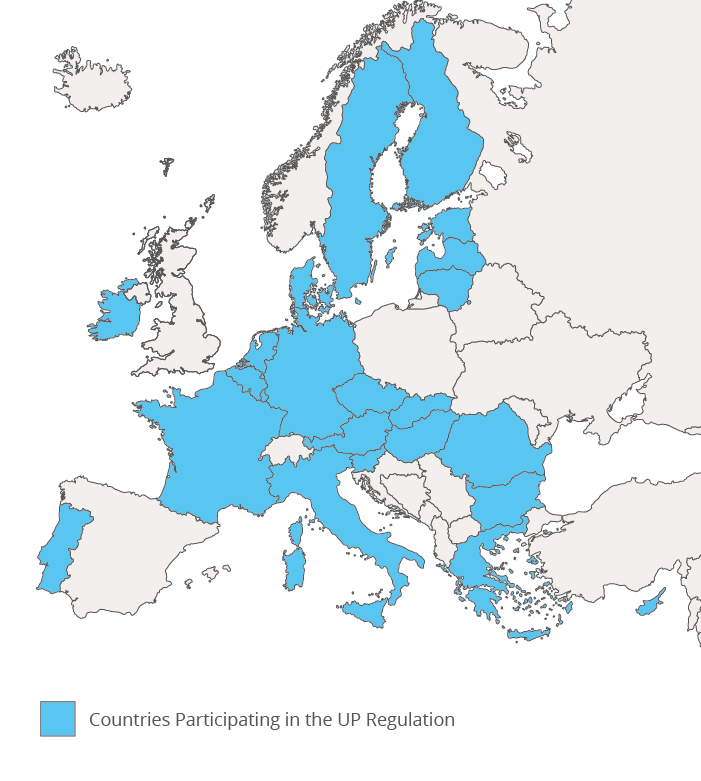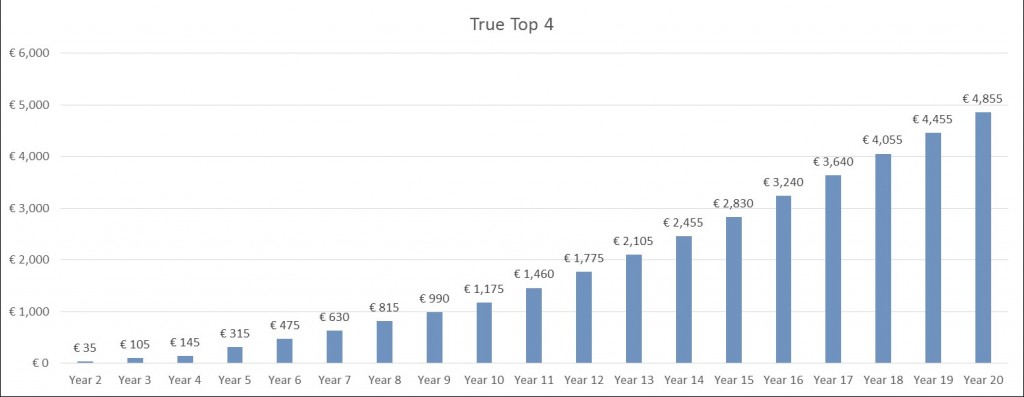Unitary Patent

The “European Patent with unitary effect”, or “Unitary Patent” for short, is a single patent which will cover all participating Member States of the European Union. Unitary Patents will be obtained using the existing European Patent application procedure and will be enforceable throughout the participating Member States in a single action brought before the new Unified Patent Court.
Jurisdictions covered by the Unitary Patent
The majority of EU Member States agreed to adopt the new system. However, Spain declared that they are not taking part, Poland has not signed required legislation, and the UK has left the EU and declared that it is no longer seeking to be a part of the system. The time it takes for countries to ratify the legislation varies so the actual coverage of new Unitary Patents is likely to change over time. An important point to note is that it will not be possible to obtain unitary protection and also validate in individual participating EU Member States for the same patent.
Those countries that are currently covered by the European Patent Convention (EPC) but are not in the EU, such as Switzerland, Norway and the UK, will not be covered by the Unitary Patent. However, it would be possible to obtain a Unitary Patent and also validate in those non-EU and any other non-participating countries.
The first UPs will be registered on 7 June 2023 and cover Austria, Belgium, Bulgaria, Denmark, Germany, Estonia, Finland, France, Italy, Latvia, Lithuania, Luxembourg, Malta, Netherlands, Portugal, Slovenia and Sweden.
Date of implementation
The PAP began in January 2022 and completes at the end of May 2023. The UP will be available once the PAP has completed, that is from June 2023.
During the PAP, the UPC’s committee have appointed judges, who in turn voted to appoint presidents of the court. There are a number of other procedures that have been implemented during the PAP including implementation of IT systems, training of judges and other staff. The UPC was up and running from 1 June 2023, and the UP became available for newly granted EP patents on the same day that the UPC became operational.
The UK and the Unitary Patent
It is the current UK government position that the UK will not seek to be a member of the UP. Consequently, Unitary Patents (UP) will not cover the UK.
British companies and inventors will still be able to obtain UPs as well as use the UPC. Rights of representation before the European Patent Office (EPO) are based on membership of the European Patent Convention (which includes non-EU members such as Turkey, Norway and the UK) and are entirely independent of membership of the EU. Any authorised representative before the EPO will be able to obtain registration of a UP via the EPO regardless of whether the representative is resident inside or outside the EU. Consequently, all of Withers & Rogers’ European Patent Attorneys will be able to obtain Unitary Patents regardless of their nationality or whether they are based in the UK, France or Germany, just as they are able to obtain conventional European Patents.
The application procedure
Unitary Patents can be obtained from the European Patent Office (EPO) using the existing patent application procedure.
On grant, applicants have three main options to choose from:
- Validate the European Patent in the usual manner, choosing individual countries where protection is desired (i.e. no unitary protection);
- Elect to have a Unitary Patent, covering the participating EU Member States (i.e. no individual validations); or
- Elect to have a Unitary Patent, together with validations (or extensions) for countries which are not participating in the new system or which have not yet ratified the UPP legislation.
Cost of obtaining and renewing a Unitary Patent
In order to request a Unitary Patent, the standard central EPO fees for publication, grant, printing, and translation will be required. A big area of saving for the UP is the removal of the requirements for national validations, country by country, of the granted patent. Renewal fees have been set at a ‘True Top 4’ approach, which could lead to significant savings for applicants seeking Europe-wide protection. However, for those looking to file only in one or two countries, traditional European Patents or national filings may be the cheaper option.
As traditional European Patent applications will be used to obtain Unitary Patents, filing and prosecution costs would remain the same. The main differences in cost at the grant stage would be as a result of translation costs, for which the full specification must be translated into only one other language, and that the requirements for local addresses for service/national validation which exist in many Member States do not apply.
The renewal fees for the Unitary Patent have been set at a ‘True Top 4’ level, meaning that they are equivalent to the sum total of the renewal fees for the four most validated countries.
In light of the True Top 4 model, European Patents validated in more than four countries are likely to be more expensive to renew and European Patents validated in fewer than four countries are likely to be cheaper.
Translations
For patent prosecution, the language regime is exactly the same as the current system used by the EPO. Applications may be prosecuted in any of the official languages of the EPO: English, German and French. On grant, the process changes for Unitary Patents.
Ultimately, the aim is that when an applicant elects to obtain a Unitary Patent after grant, the EPO would produce highly accurate machine translations. However, there are transitional provisions which require human translations, which may last as long as twelve years, depending on the progress of the machine translations.
The transitional translation provisions require the entire patent specification to be translated into one other EU language, if the patent application was prosecuted in English. There is the option for such applicants to choose one of the cheapest languages in which to obtain a translation. If the application was prosecuted in French or German, the entire specification must be translated into English. Accordingly, applicants may find that post grant translation costs would be cheaper if the application has been prosecuted in English.
Conclusions
There are three primary routes for obtaining patent protection in Europe and two routes for litigation. Accordingly, European filing strategies are likely to be more complex.
There are a number of decisions that applicants will need to begin considering. For example, do you register for a Unitary Patent or opt for national validations? Should you begin considering direct national filings rather than using the European Patent office? Should you opt out of the new court system with your existing European Patents?
The new system should offer cheaper pan-European patent protection. However, some applicants requiring reduced geographic coverage may still find that traditional European Patents offer a more affordable route.






